HOMER, Alaska — The late 1990s and early 2000s were boomtimes for halibut fishermen in Alaska. Over 80 million pounds of the flatfish were being harvested annually. Deckhands could earn $250,000 a season. The small boat harbor in the southcentral city of Homer, known as the “halibut capital of the world,” was bustling.
Erik Velsko, 39, was one of those fishermen. He started buying annual shares in 2001 when the halibut population was at near historic highs. But within a few years, the stock plummeted by more than half and the quotas for commercial fishermen were slashed accordingly. Velsko’s share has gone from 12,000 pounds annually to less than 4,000 pounds. His brother-in-law, who also fishes out of Homer, has had his quota cut from about 90,000 pounds to 20,000 pounds. Many fishermen have gotten out of the business altogether.
“That whole dock was all long liners, you know, 15 years ago,” Velsko told me last year, pointing to a row of idled boats in the harbor. “It’s two or three now. My brother-in-law and another one.”
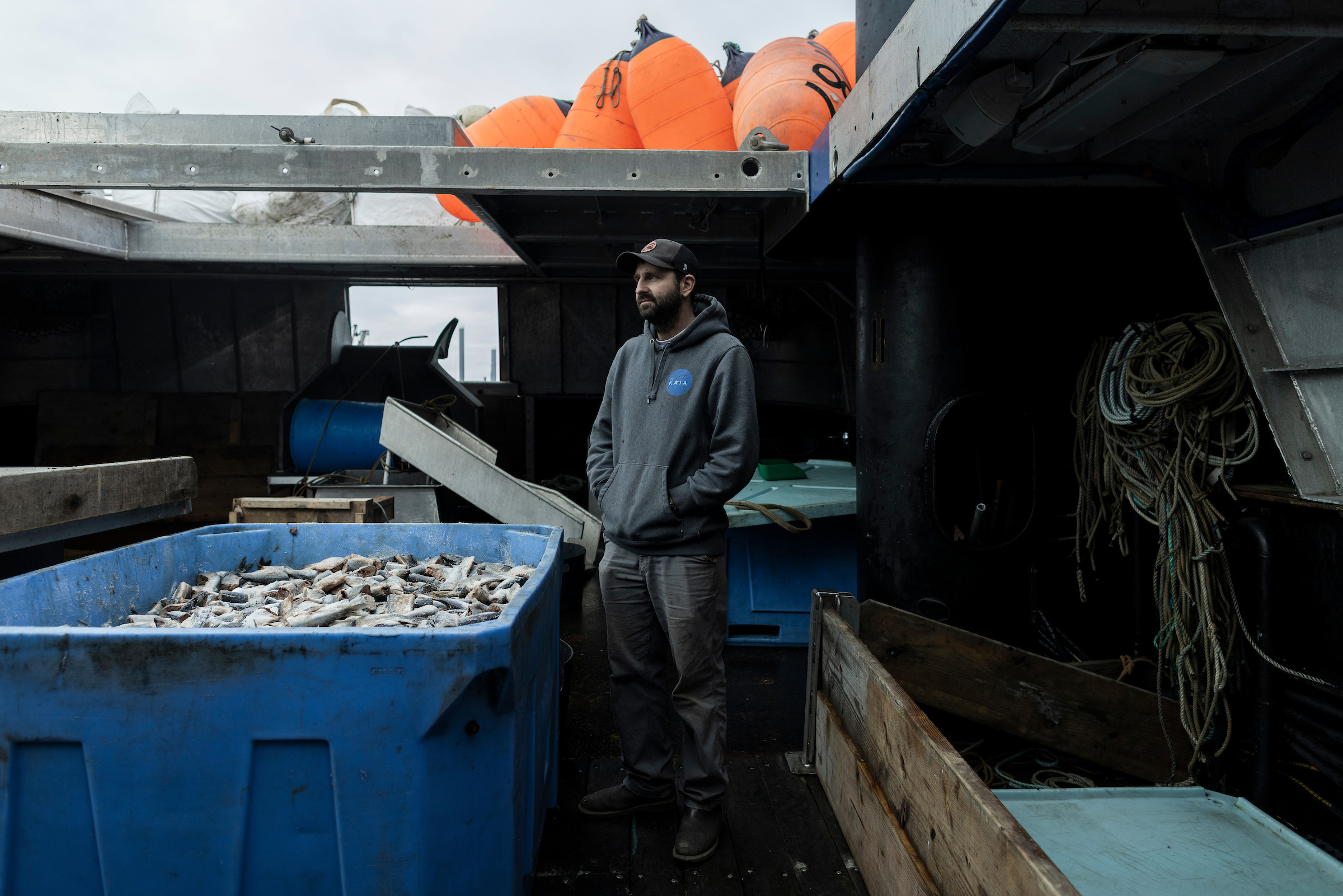
Captain Erik Velsko on his boat “Kaia” in Homer, Alaska. Velsko sits on the Alaska Bycatch Review Task Force. Image: Nathaniel Wilder/POLITICO
Halibut wasn’t the only so-called directed fishery to experience such a catastrophic drop. The crab fleet — made famous in the reality show “Deadliest Catch” — has been mostly stuck in port for two years after the near total collapse of the snow crab population and the decades long decline of red king crab. This year both fisheries were closed, a major blow to many of Alaska’s coastal communities, who rely on related industries, including processing, to float their economies. At the same time, subsistence and sport salmon fishing on the state’s two largest rivers has been shut down because of dwindling salmon runs.
There is one fishing industry that has not suffered.
The fleet of nearly 250 trawl boats that catch groundfish (species such as pollock and yellowfin sole that congregate on or near the ocean floor), have recorded banner seasons — permitted to bring in between 3 and 4 billion pounds of fish annually for worldwide distribution. What makes this inequity especially jarring for the captains of halibut, crab and salmon boats is that the trawlers, some as long as a football field, which drag vast nets along the sea bottom, also scoop up millions of pounds of species they don’t actually want, and they throw most of it overboard no matter how valuable it might otherwise be.
It’s called bycatch. Roughly two-thirds of the total halibut caught in the Bering Sea since 2006 has been bycatch taken in trawler nets most of which is dumped. In 2021, when subsistence fishermen were prohibited from fishing for chinook and chum salmon on the Yukon River, pollock boats swept up more than half a million individual salmon from the Bering Sea. And while red king crab and snow crab fisheries have been shuttered this year, the trawl industry has still been permitted to discard up to 4.3 million individual snow crab and 32,000 red king crab though they don’t always reach their cap.
The reasons for the crash of the halibut, crab and salmon populations — a collective disaster that has sucked hundreds of millions of dollars from the Alaskan economy — have been hotly debated for years. The Bering Sea, which has long been one of the world’s most productive marine ecosystems, accounts for nearly 40 percent of all seafood caught in the United States, generating billions in revenue and tens of thousands of jobs. But evidence is growing from government agencies including the National Oceanic and Atmospheric Administration, conservation groups and fisheries scientists that the trawl industry is causing greater damage to marine habitat than previously assumed and that the removal of vast quantities of pollock, an important source of food for other species such as fur seals and Steller sea lions, is causing disruptions to the larger ecosystem. At the same time, the groundfish fishery, which accounts for roughly 80 percent of the annual catch in Alaska, has come to dominate the regulatory system that sets fishing quotas for all species, Velsko says. In some ways, conflicts of interest are built into federal fisheries management and have become entrenched. Industry representatives or commercial operators with ties to the trawl fleet frequently serve on the North Pacific Fishery Management Council, the regional NOAA body which regulates the industry, and vote on policy that affects their sector.
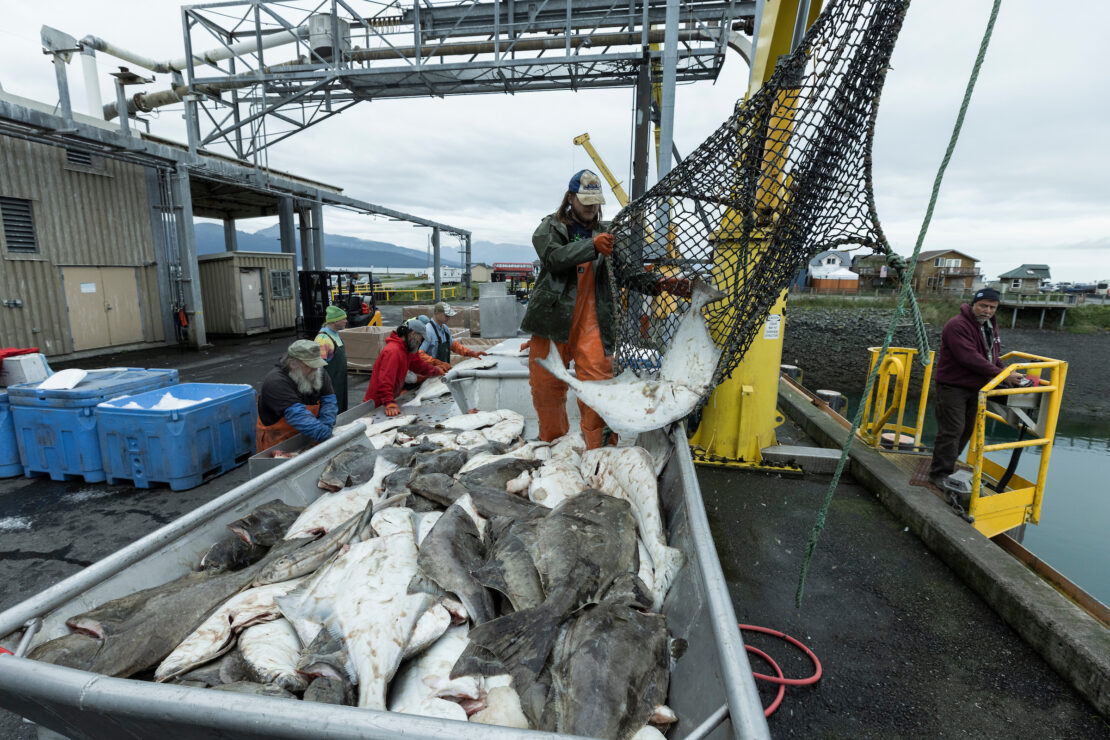
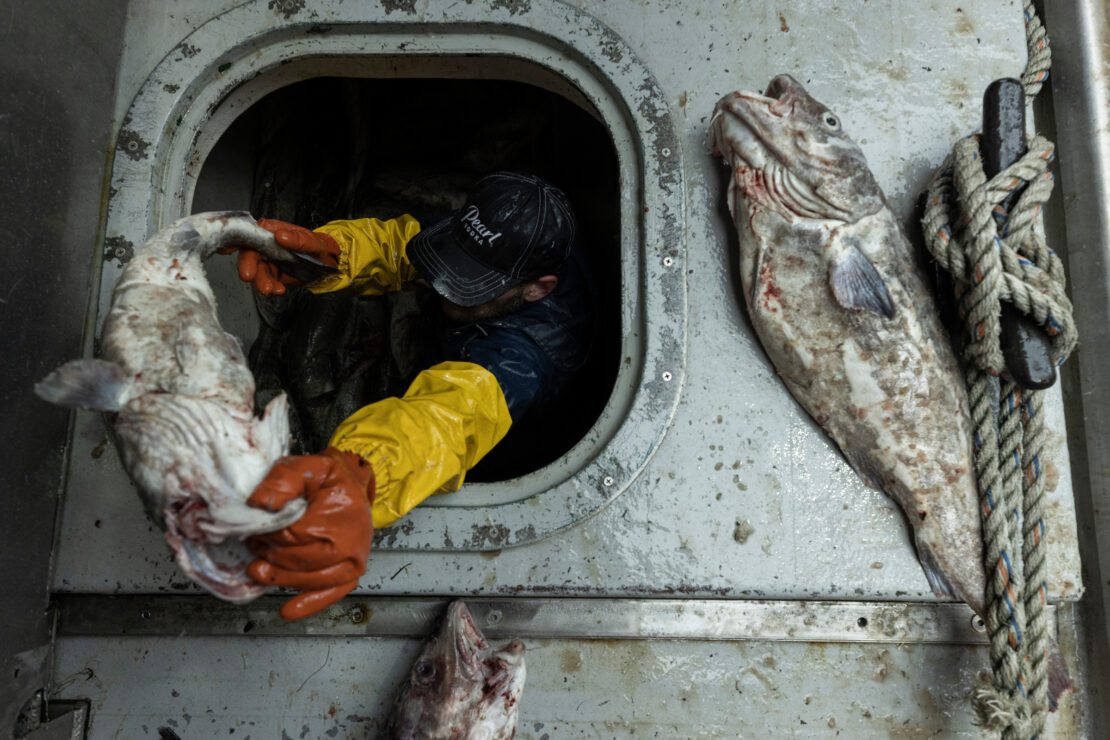 The trawl industry is causing greater damage to marine habitats than previously assumed. (Nathaniel Wilder/POLITICO)
The trawl industry is causing greater damage to marine habitats than previously assumed. (Nathaniel Wilder/POLITICO)
“It should’ve been more obvious two decades ago,” said Jim Balsiger, who served as NOAA’s top fisheries official in Alaska for 20 years before retiring in 2021. “Removing three to four billion pounds of fish from the Bering Sea every year for four decades is not a benign activity.”
But, in the case of halibut and the other recently closed sectors, it has been the directed and subsistence fisheries that have had to limit their quotas to help restore depleted populations. The trawlers on the other hand have been allowed to maintain at or near the same levels of wasted bycatch for certain species. “The directed fishery has had to bear the burden of conservation,” Velsko says.
Trawl industry representatives say that bycatch, which the industry is required by law to discard, is not the driving force behind recent crab, salmon, and halibut declines. They point to climate change and warming waters as well as natural population variability as the primary culprits. Over the last couple of decades, trawl vessels have significantly reduced waste and improved efficiency, according to Chris Woodley, executive director of the Groundfish Forum, which represents about 18 boats that fish in the Bering Sea and account for the majority of halibut bycatch. (Directed fisheries still bring in most of the halibut caught in Alaska waters when the Gulf of Alaska and Aleutian Islands fishing grounds are included.) Since the mid-1990s, the fleet has dramatically reduced the volume of fish — both targeted and non-targeted species — it tosses overboard. The discard rate has gone from about 50 percent to less than five over the last 20 years, according to Woodley.
Rebecca Skinner, executive director of the Alaska Whitefish Trawlers Association, which represents about 40 small to medium-sized trawl vessels based out of Kodiak, one of the largest commercial fishing ports in the United States, says that zeroing out bycatch would have a negligible effect on other species while potentially shutting down an important commercial fishery. “Bycatch did not drive the crab stocks down. Bycatch is not driving the salmon stocks down,” she said. “So even if you completely eliminated bycatch, it’s not going to make those stocks rebound. And that’s the hard part.”
This years-long dispute between the directed fisheries and the trawl industry has been confined to meetings of obscure state and federal agencies and has received only local coverage for the most part. But in November, amid a groundswell of anti-trawl sentiment in the state (a popular Facebook group launched in 2020, Stop Alaskan Trawler Bycatch, now has more than 20,000 members), Alaskans elected Mary Peltola as the state’s only member of Congress. Peltola, the first Alaska Native to serve in the House of Representatives, campaigned on a platform that placed issues of bycatch and the viability of smaller commercial and subsistence fisheries at the forefront of her legislative agenda. She posted frequently about the impacts of trawl fishing on the environment to her tens of thousands of followers on social media and elevated the issue to national attention. The first sentence of Peltola’s “story” on her website reads: “I’m a Yup’ik Alaska Native, salmon advocate, and Democrat.”

Trawl industry representatives say that bycatch, which the industry is required by law to discard, is not the driving force behind recent crab, salmon and halibut declines.
“For 30 years, this industry has been tossing over juvenile salmon, halibut and crab by the metric ton,” she said to POLITICO and Type Investigations. “At some point we have to imagine that that is not sustainable. That that catches up with us.”
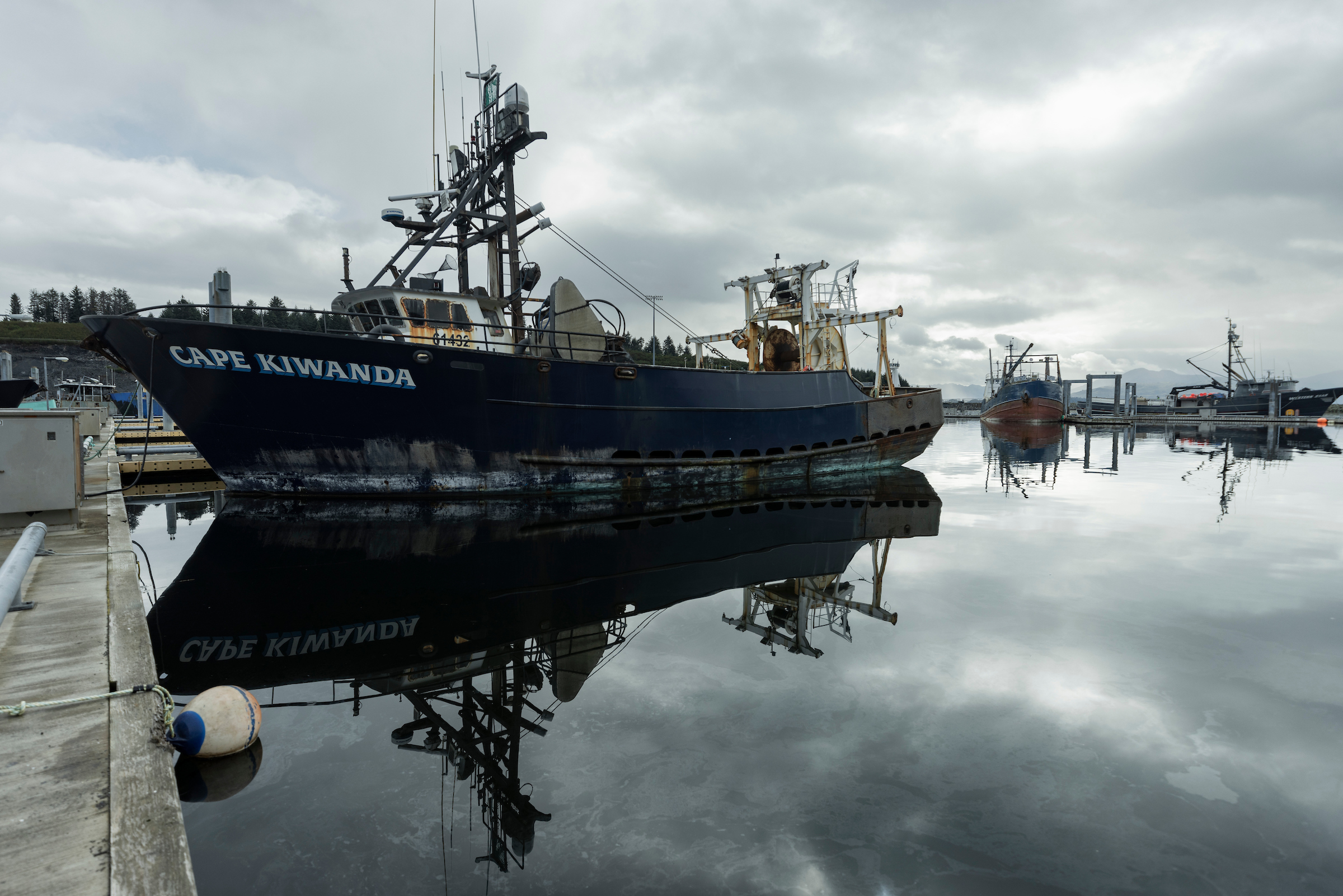
The trawl vessel “Cape Kiwanda” in Kodiak, one of the largest commercial fishing ports in the United States. Image: Nathaniel Wilder/POLITICO
Peltola is quick to acknowledge the role climate change and warming waters have played in impacting Alaska’s fisheries but says the trawl industry and the council that regulates it have not done enough to reduce bycatch or expand habitat protections for vulnerable species. The council, which sets bycatch quotas and manages commercial fisheries up to 200 miles from shore, has been captured by the largest industry players, Peltola says. Subsistence users and smaller commercial operators have been pushed to the margins. Economic interests rather than sustainability have come to dominate the decision-making process.
“The council works well if you are from the biggest, wealthiest most connected among us,” Peltola said.
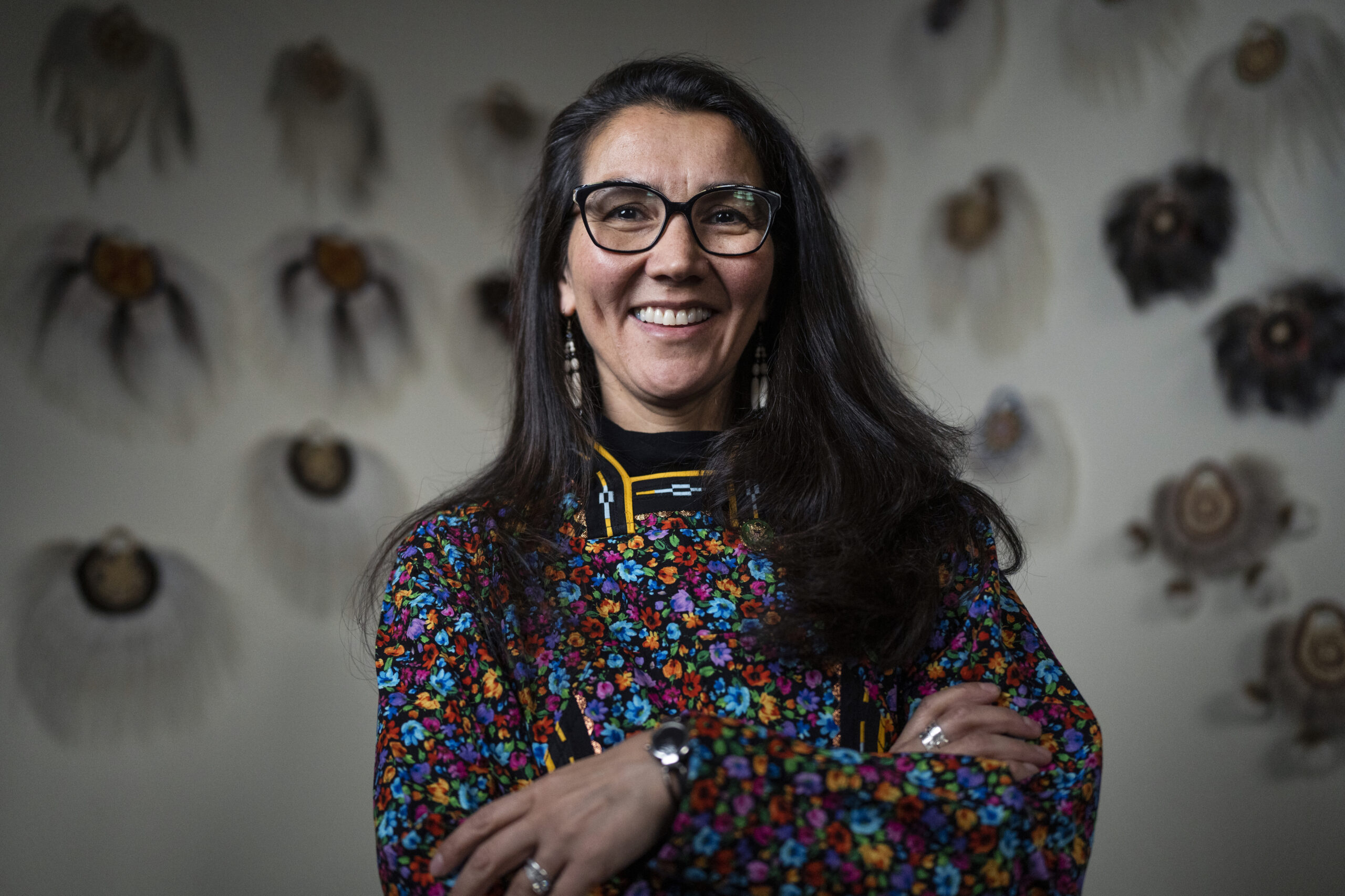
Rep. Mary Peltola, the first Alaska Native to serve in the House of Representatives, campaigned on a platform that placed bycatch at the forefront of her legislative agenda. Image: Tom Williams/CQ Roll Call via AP
In a written statement, David Witherell, the council’s executive director, disputed the notion that the council favors any given sector or that it prioritizes economic interests over the long-term health of the ecosystem. In addition, Witherell noted that any proposed changes to fishery regulations are evaluated by the council’s scientific and statistical committee and are part of an open and transparent public comment process.
“The council has a successful record of science-based, conservative and sustainable fisheries management, and the U.S. is widely considered to have one of the best, if not the best, fishery management programs in the world because of its stringent sustainability and conservation standards,” Witherell wrote.
As Alaska’s lone House representative, Peltola is now in a position to make sweeping changes to the way the council operates. She is a member of the House Natural Resources Committee and has supported an overhaul of the Magnuson-Stevens Fishery Conservation and Management Act, legislation passed in 1976 that governs how federal fisheries are managed and that has only been updated twice before. If it passes, the bill could alter the balance of power between the trawl industry and the smaller commercial operators and subsistence fishermen in Alaska.
The bill would add two tribal seats to the council, which would give subsistence users greater influence over council decisions and policy making. It would also enable the federal government to further reduce bycatch quotas — a move the trawl industry says would have catastrophic effects on Alaska’s economy.
“We’re looking at a multi-species collapse,” Peltola said. “And it’s not just subsistence, but these smaller mom and pop fisheries. The commercial industry isn’t just these industrial players. It’s so many Alaskan families. It is part of our identity.”
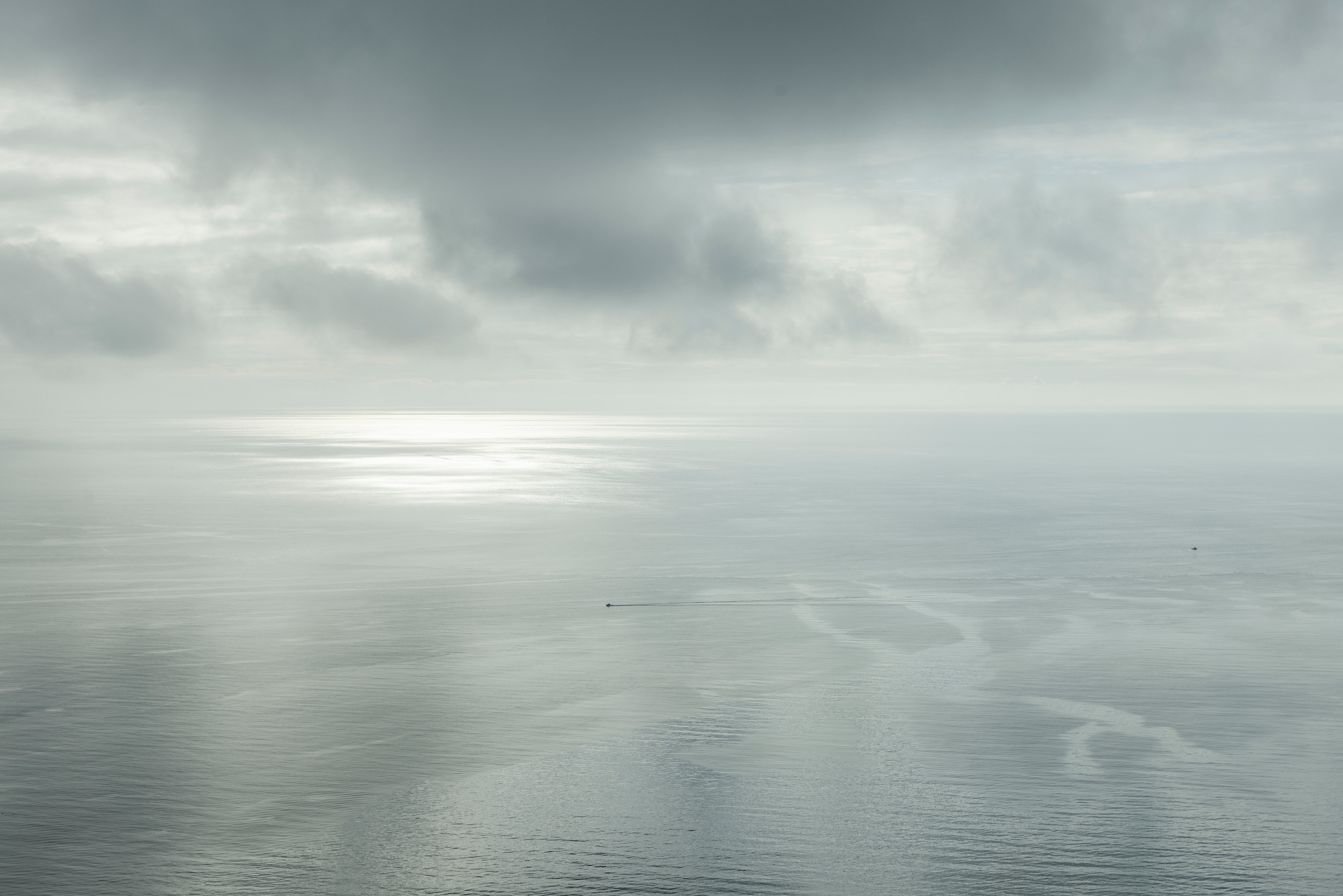
“We’re looking at a multi-species collapse,” Peltola said. “The commercial industry isn’t just these industrial players. It’s so many Alaskan families. It is part of our identity.” Image: Nathaniel Wilder/POLITICO
When Magnuson-Stevens was passed in 1976, the fisheries industry in the North Pacific was dominated by foreign fleets mostly from Japan, Norway and the former Soviet Union. There was little oversight, and several species were heavily overfished. Commercial fishing and unregulated bycatch likely contributed to the collapse of Bristol Bay red king crab in the early 1980s, a low point from which the species has never recovered. Magnuson-Stevens and subsequent amendments gradually pushed foreign operators out of U.S. waters and established eight regional councils to manage and protect the nation’s fisheries. The North Pacific Fishery Management Council oversees fisheries in federal waters in the Gulf of Alaska, Bering Sea and the Aleutian Islands.
Over time, foreign operators were replaced by a trawl industry based largely in Washington state. That fleet has had its own impacts on fish populations in the Bering Sea, the 772,000 square mile expanse of the northern Pacific that yields nearly half of all the fish consumed in the U.S. and an increasingly large share of all seafood that ends up in school lunchrooms and in the frozen food section of the supermarket. (McDonald’s sells roughly 300 million Filet-O-Fish sandwiches a year, made, according to the company, with “wild-caught Alaska pollock…which is 100 percent sourced from sustainable fisheries.”)
The method of fishing that produces that volume of fish dates back to the late 19th century when the advent of steam power transformed the industry. Unlike the long lines with thousands of baited hooks used to catch halibut or the boxy metal traps with mesh webbing used to catch crab, trawling relies on massive nets, some three quarters of a mile long, that are dragged along the ocean floor. The mouth of the net can be up to 300 feet wide— environmental activists like to say a 747 airplane would fit comfortably inside the opening. As the net and other hardware is pulled along the ocean floor, it acts like a plow, churning up sediment and leveling deep sea coral gardens and kelp forests that support a complex array of marine life. In a 2002 report, the National Academy of Sciences said that trawling can “reduce habitat complexity by removing or damaging the biological and physical structures of the seafloor.” During a single tow, which can last up to 10 hours and cover the same ground multiple times, a large trawl vessel can impact 1 to 2 square miles of ocean floor, according to NOAA’s own data. A single factory trawler can catch and process up to 225 metric tons of fish daily. Pollock is by far the largest fishery in the Bering Sea and Gulf of Alaska; on average more than three billion pounds of the white fish are removed from the region every year.
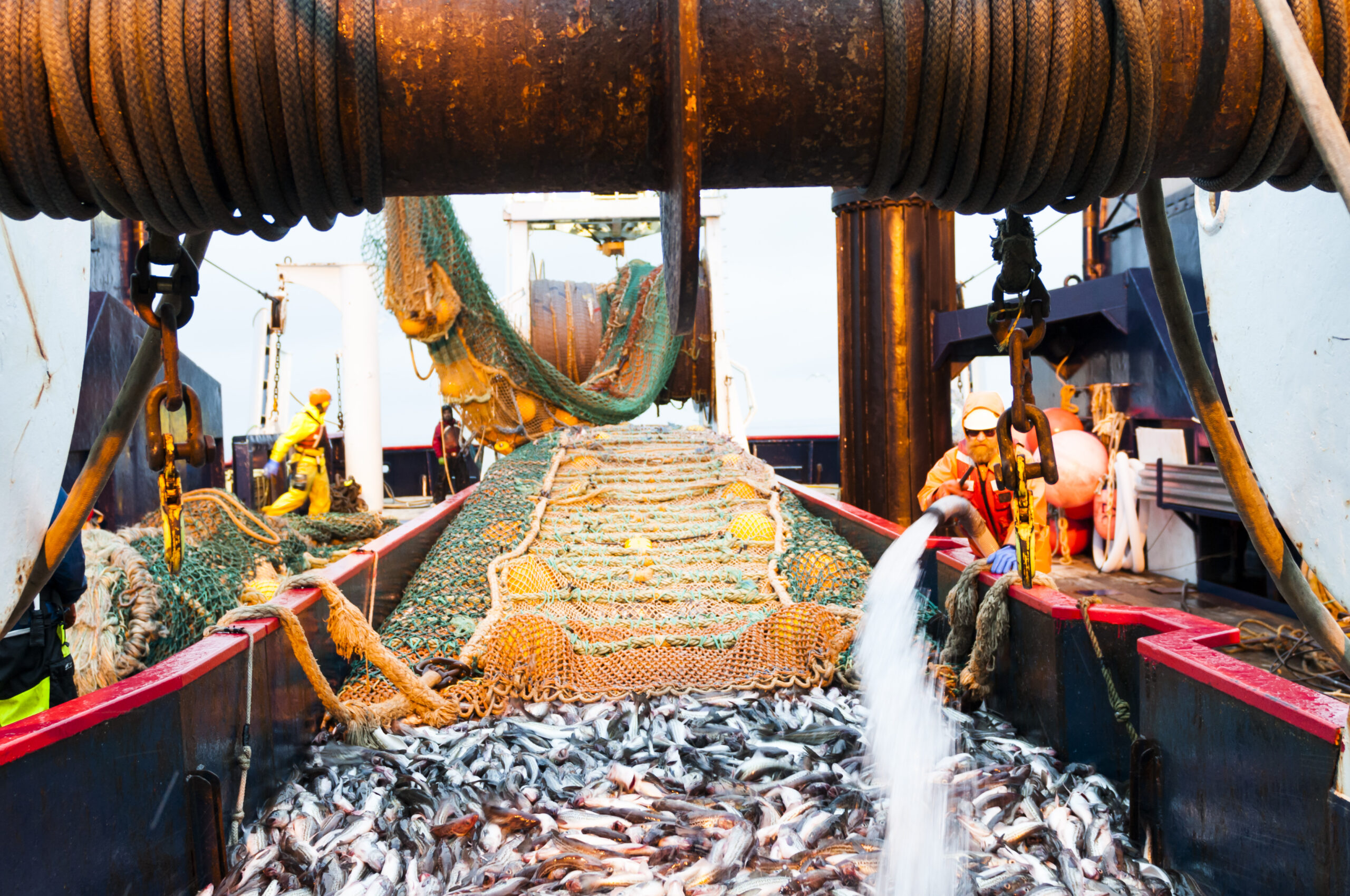
The Bering Sea yields nearly half of all the fish consumed in the U.S. and the majority of all seafood that ends up in school lunchrooms and in the frozen food section. Image: Christoph Mohr/picture-alliance/dpa/AP Images
Trent Matthews grew up commercial salmon fishing in Southeast Alaska. Ten years ago, he took a job on a trawler operated by US Seafoods, the Alaska Endeavor, which is involved in the Bering Sea groundfish fishery. It was the best money he’d ever made — about $1,000 a day. But after five weeks he quit. Matthews said he was appalled by the waste, particularly halibut, but also crab and non-commercial fish species, and what he described as the leveling of marine ecosystems. (US Seafoods declined to comment.)
“Once I started seeing the destruction, it was hard to watch,” Matthews said.
Alaska’s fisheries, once lauded as the best managed and most abundant in the country, appear increasingly fragile. Climate change — the Arctic is warming at least two times faster than the rest of the planet — has led to sea ice loss and warming ocean temperatures, which is further stressing already vulnerable populations. Last year, NOAA surveys revealed that nearly 11 billion snow crab in the Bering Sea had disappeared over the last two years, a population collapse across all size and age classes, which the agency has attributed to a “marine heat wave.” Others, though, have questioned whether warming seas can fully explain the decline.
It’s not just commercial fisheries that have been impacted by warming waters and decades of industrial fishing. The decline of chinook and chum salmon, species that are integral to Native communities on the Yukon and Kuskokwim Rivers, led to the closure of subsistence fisheries in 2021 and 2022 and forced the state to fly in thousands of pounds of frozen fish to remote villages for the first time ever.
NOAA Fisheries, which is part of the Department of Commerce and is responsible for overseeing the nation’s fisheries, is still working to understand the recent salmon and crab declines. It says that preliminary genetic analysis shows that bycatch makes up a relatively small percentage of chinook and chum salmon bound for the Yukon and Kuskokwim rivers, and that “unprecedented warming” is thought to have led to poor growth and survival of the species. But when runs are as low as they are, even relatively small amounts of bycatch, depending on where they are occurring, can make a difference, according to Gordon Kruse, a fisheries biologist who served on the North Pacific Fishery Management Council’s science and statistical committee for more than two decades.
“If [bycatch] is proportional and just evenly spread out, then it might be hard to make a case that this is impacting the populations of salmon,” Kruse said. “On the other hand, if salmon are aggregating by river system in the ocean and most of the catch is coming from a few rivers or streams, then the impact could be huge.”
NOAA also noted that environmental and “human activities” likely affected Bristol Bay red king crab which was heavily exploited in the 1970s and early 1980s. In addition, commercial crabbing associations and conservation groups allege that the agency is likely undercounting the volume of crab bycatch in the Bering Sea. NOAA only counts whole crab that end up in the trawl nets brought on board. Individual animals that are maimed and crushed or that slip through the nets that drag along the ocean floor where crab tend to cluster are not counted. This is known as “unobserved mortality.”
In a written statement, NOAA Fisheries said, “The level of unobserved mortality of crab species…is unknown,” but that the agency factors this variable into its population estimates.
According to Jon Warrenchuk, a senior scientist with the conservation group Oceana, 165,000 square miles of ocean floor, an area roughly the size of California, has been impacted, most of it in the Bering Sea. NOAA confirmed the figure and said, “The area of the EEZ (exclusive economic zone) off Alaska is more than 900,000 square miles. So approximately 18 percent of the ocean floor has been impacted by trawl nets or trawl gear.” Once compromised, it can take decades if not longer for these areas to recover. One recent NOAA study has shown that deep sea sponges, invertebrates attached to the seafloor that provide habitat for juvenile and adult fish, have been damaged by trawl fishing which, the agency noted, can permanently alter the deep-sea ecosystem.
In part because of its natural abundance, pollock also plays an important role in the larger ecosystem. Some studies have linked the growth of the commercial U.S. pollock fishery, beginning in the 1970s, to the decline of Steller sea lions, now an endangered species, and fur seals, which have declined by about 70 percent. Seabirds, including kittiwakes and murres that nest on the Pribilof Islands in Bering Sea and rely on pollock, have also decreased significantly during the same period.
“The footprint of industrial trawling is huge — it’s massive,” said Warrenchuk. “We would contend there is ecosystem overfishing occurring.”
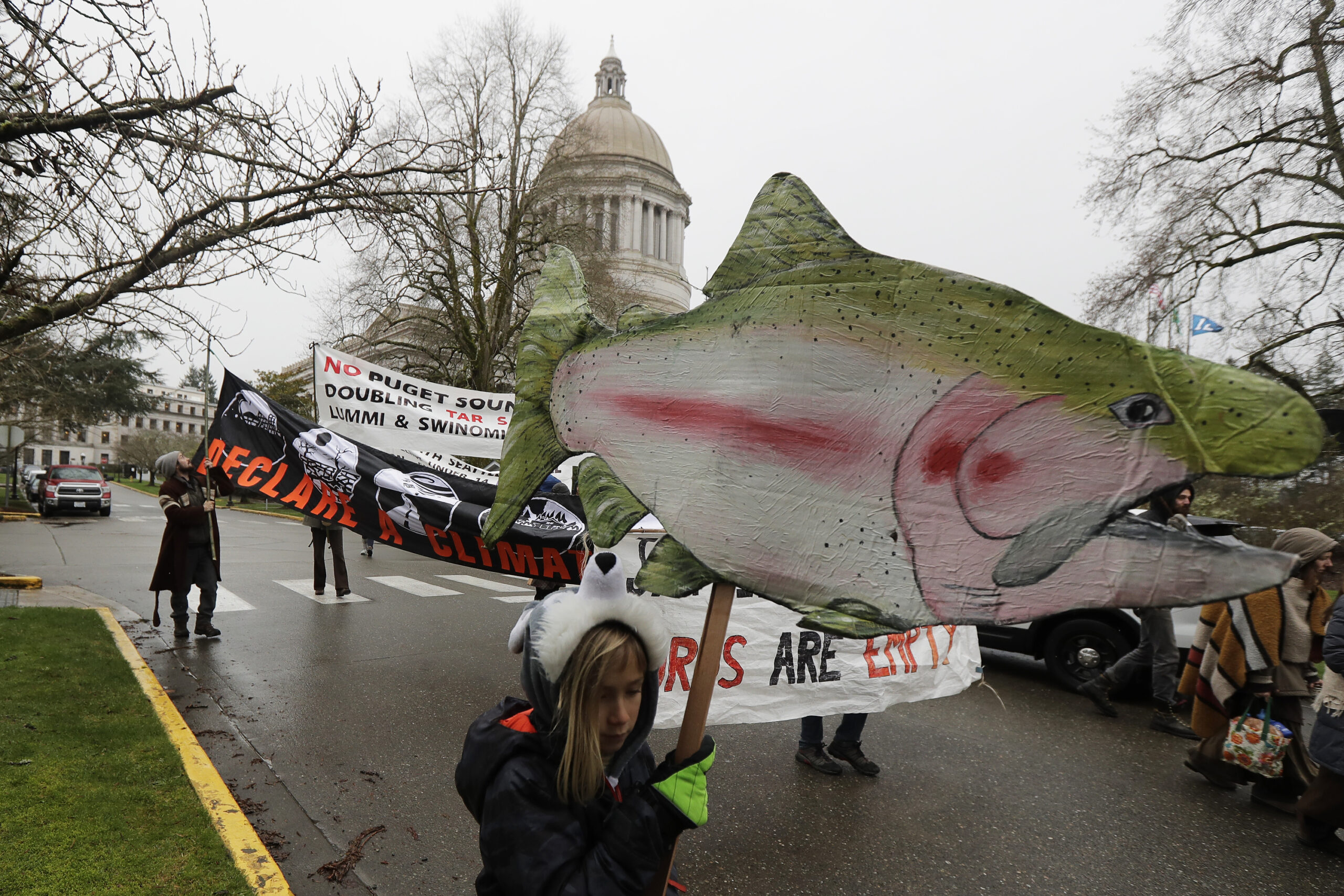
Activists and supporters of the indigenous group “Protectors of the Salish Sea” march in Olympia, Wash. in Jan. 2020. Alaska’s fisheries, once lauded as the most abundant in the country, appear increasingly fragile. Image: Ted S. Warren/AP Photo
The council charged with managing the fisheries that depend on those ecosystems is now at the center of a very public battle between the smaller commercial operators and subsistence fishermen and the trawl industry. Conflicts of interest among council members are long-standing and, in some ways, unavoidable. Magnuson-Stevens was designed to allow industry representatives and commercial operators to vote on policy, the belief being that those directly involved in fisheries would be incentivized to protect them.
The regional fishery councils, established after Magnuson-Stevens was passed, are responsible for managing commercial fisheries, setting annual quotas for individual species and bycatch limits for each sector. (In Alaska, crab stocks are co-managed with the state’s Department of Fish and Game. The state also manages salmon, but bycatch quotas are set by the council.) The North Pacific Fishery Management Council has 11 voting members and includes representatives nominated by governors from Oregon, Washington, and Alaska, which has a majority of the seats. Final appointments are made by the Secretary of Commerce and there are a handful of seats reserved for agency representatives. Currently four of the council’s 11 members have direct ties to the trawl industry or pollock processors, many of which also operate vessels in the Bering Sea.
According to critics of the council process, including Peltola, the mandate in Magnuson-Stevens that fisheries be managed to achieve “optimum yield,” while also protecting fish stocks, has privileged economic considerations over environmental protection. This has led the council to favor the biggest players and the largest, most profitable fisheries. “The council process seems to be heavily influenced in supporting the investment that has been made in the fisheries infrastructure,” Kevin Bailey, a fisheries biologist and former NOAA employee wrote in Billion-Dollar Fish, a history of the pollock industry.
Velsko, who served on the North Pacific Fishery Management Council’s advisory panel and was a member of the state’s bycatch review task force, established by Alaska Gov. Mike Dunleavy in late 2021 amid growing controversy over the issue, argues that the council has become too cozy with the trawl sector and its many lobbyists. Dozens of state and federal officials, many of whom have served on the council, have gone to work for the trawl industry or trade associations that lobby on behalf of groundfish fisheries. Buck Laukitis, another commercial fisherman in Homer who served on the council from 2016 to 2019 said, “It’s a typical revolving door. You work for the council. You become an expert. You write the analysis and a week later you’re working for the industry.”
Though council members submit financial disclosure forms, which are posted on the NOAA website, they are only required to recuse themselves from voting on policy if it is deemed to have a “significant and predictable effect” on their financial interests. In practice, according to Balsiger, the former NOAA official, recusals are rare.
Witherell, the council’s executive director, said all decisions are driven by science and that a broad cross section of representatives from the commercial, recreational and sport fishing sectors currently serve on the council. Four of the members are state and federal representatives with no ties to industry. “The Council does not prioritize economic considerations over environmental protection for crab stocks or any other fish stock,” he said. Witherell also pointed to recently updated NOAA policies that are designed to strengthen financial disclosure requirements and clarify the process for determining whether council members must recuse themselves from a particular vote.
The council ultimately answers to NOAA Fisheries, which is part of the Department of Commerce. But NOAA has historically deferred to the council and rarely overturns decisions made at the regional level, a pattern that has continued under the Biden administration.
Last fall, crabbers petitioned Secretary of Commerce Gina Raimondo to intervene directly to temporarily close an area in the Bering Sea considered important for the reproduction and survival of red king crab. Known as the red king crab savings area, the approximately 3,600-square-mile zone has been off limits to trawl vessels since the mid-1990s. But because of a loophole that allows “mid-water” trawl vessels to fish in the protected area, pollock boats have been exempted. The exemption was based on the assumption that these boats do not drag their nets along the ocean floor.
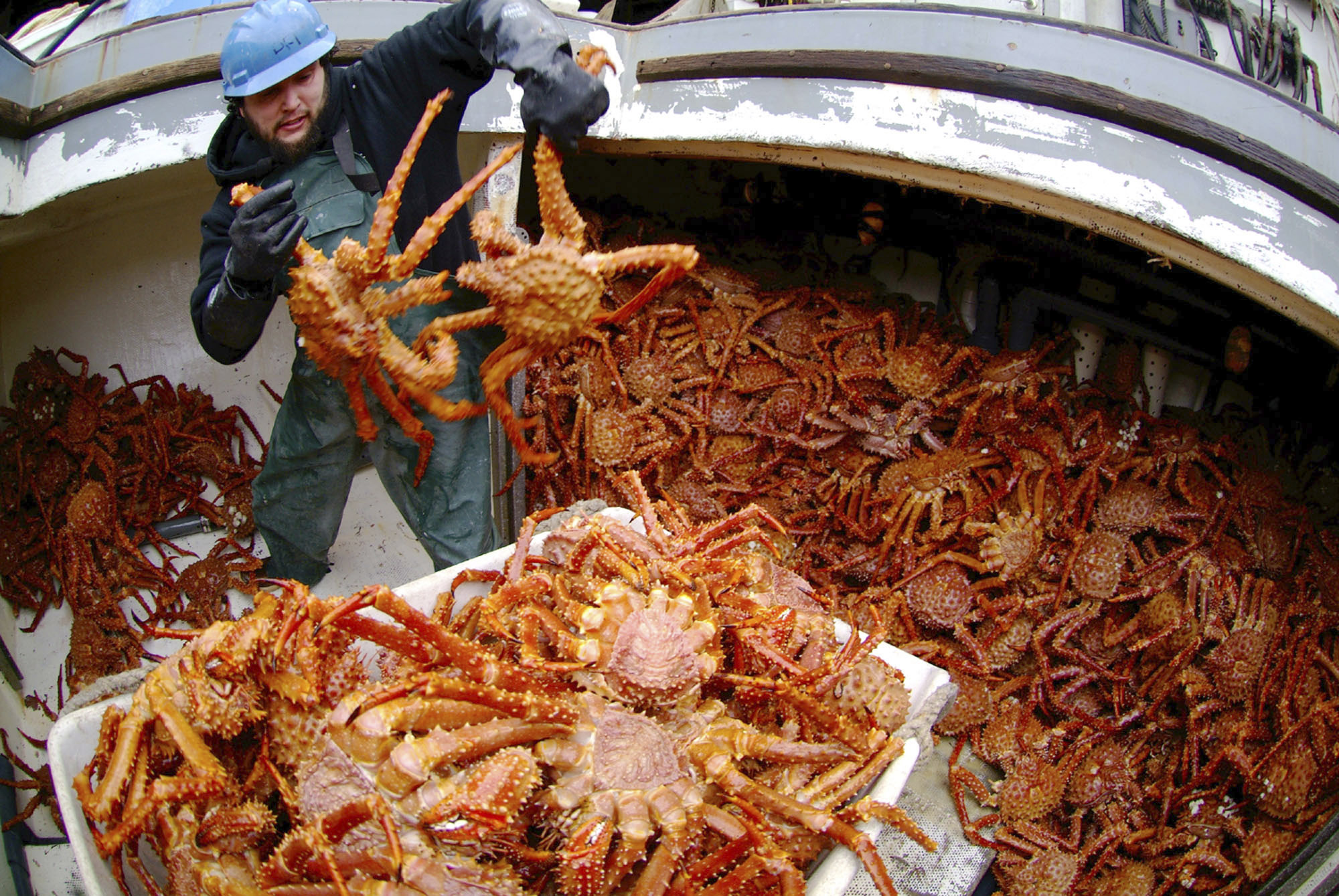
Over the last decade, according to NOAA’s own data, fishing by pollock boats in the savings area has increased significantly, much of it during the early winter season when crab are molting and highly vulnerable. Image: Klas Stolpe/AP Photo
For at least two decades, though, NOAA scientists have known that these vessels actually make frequent contact with the ocean floor. Last year, the agency published an analysis showing that pollock nets, despite their mid-water designation, are on the ocean floor 40 to 70 percent of the time. “Trawling that contacts the seafloor is assuredly one of the factors that challenge the red king crab stock,” agency scientists wrote in the paper. And over the last decade, according to NOAA’s own data, fishing by pollock boats in the savings area has increased significantly, much of it during the early winter season when crab are molting and highly vulnerable.
NOAA Fisheries initially turned the emergency request over to the council, which voted it down in December (the vote was 10-0 with NOAA’s regional administrator in Alaska, Jon Kurland, abstaining). Then, in January, the agency officially denied the request because it did not “meet the criteria necessary to determine that an emergency exists.” (A similar emergency request brought by five tribal organizations asking the agency to eliminate chinook salmon bycatch and set hard caps for chum bycatch in the Bering Sea was also denied.)
The council, according to Witherell, has identified the red king crab and snow crab stock as a “priority conservation concern,” and will take additional actions when supported by the scientific data. The council is currently considering implementing additional protection measures to reduce impacts to red king crab habitat, part of a larger review process that will be discussed at meetings this spring.
Stephanie Madsen, executive director of the At-Sea Processors Association, which represents some of the largest pollock fleets in the Bering Sea, said the vessels account for a tiny fraction of crab bycatch and that the nets they use are not designed to bottom trawl. She acknowledged that the nets do make contact with the seafloor, which has been well-known for years, but said the recently published NOAA figures were “overestimates.”
“We’re using the nets that are legally required and there have been no violations, that I’m aware of, of the performance standard,” she said.
Jamie Goen, executive director of the Alaska Bering Sea Crabbers Association, which represents commercial crab boats, doesn’t pin the red king crab decline on the pollock fishery, but said the mid-water trawl vessels could be impeding the species ability to recover at a pivotal moment. NOAA’s own scientists have been urging the council to investigate the impacts of the pollock fishery on crab stocks for well over a decade, she says. Now it might be too late.
“We’ve been coming forward to the council with different measures that would help these stocks grow,” said Goen. “We’ve been bringing measures forward for years now. What I’m seeing over and over is they [the council] have the best available science in front of them and they choose not to act.”
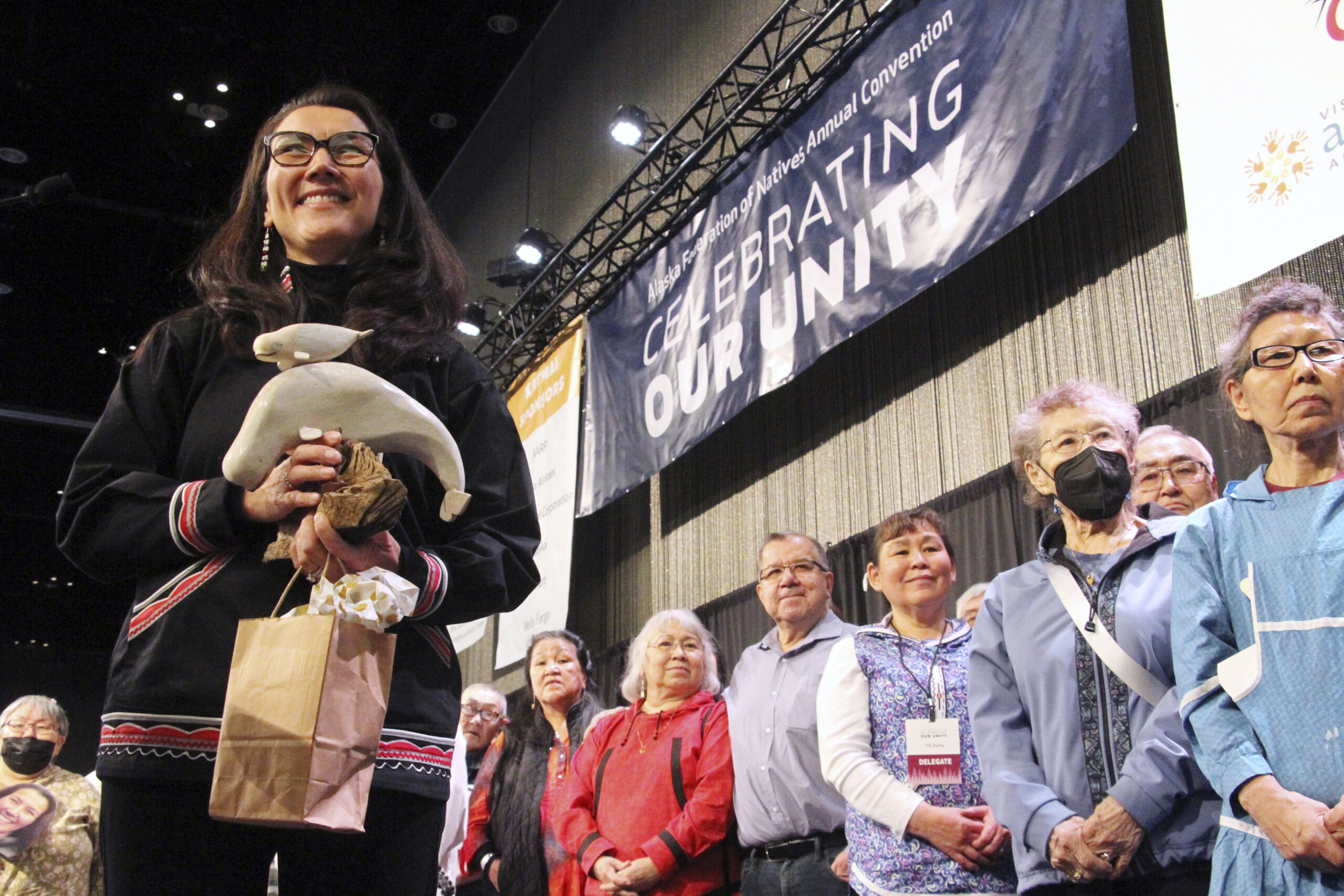
Though Peltola won handily, many fishing groups are increasingly anxious about the possibility of more intense federal oversight of the industry. Image: Mark Thiessen/AP Photo
Mary Peltola was the only U.S. House candidate in Alaska to openly support the new version of Magnuson-Stevens. Though she won handily, many fishing groups are increasingly anxious about the possibility of more intense federal oversight of the industry.
“I am definitely worried,” said Julie Bonney, the founder and executive director of the Alaska Groundfish Data Bank, which represents about 40 trawl boats and seafood processors based out of Kodiak. Bonney was disappointed that Peltola supported the bill before having met with groups like her own.
In September, a coalition of more than 150 fishing industry groups (Bonney’s, as well as several trade associations representing the trawl sector) sent a letter to the House Committee on Natural Resources, opposing the changes to Magnuson-Stevens. Language that would allow NOAA to further limit bycatch quotas, among other reforms, would lead to “chaos” within the seafood sector and higher prices for consumers, the groups warned.
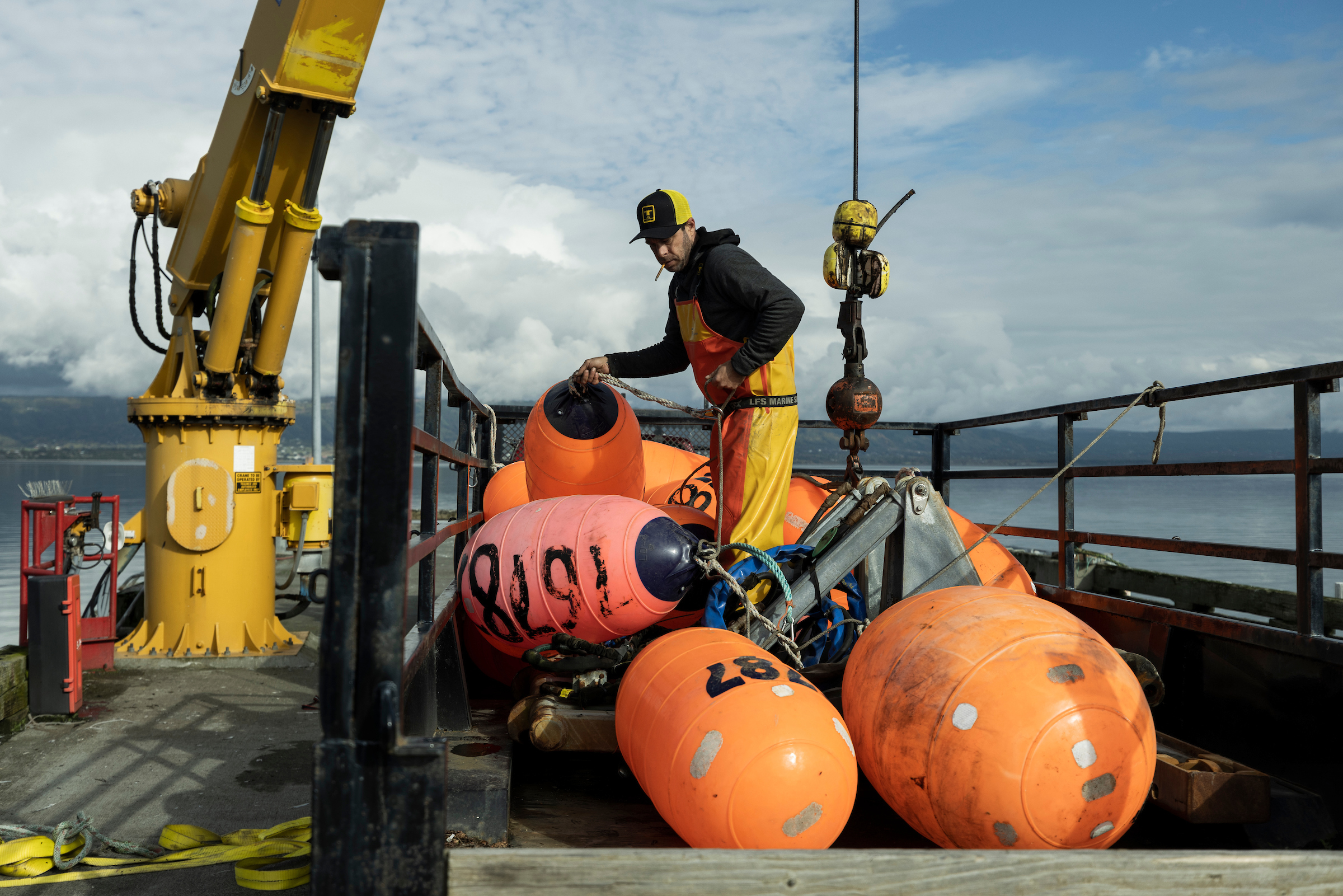
The reform bill was voted out of committee. If the reauthorization passes, it would be the first major reform of Magnuson-Stevens in 16 years. Image: Nathaniel Wilder/POLITICO
“A mandate to absolutely minimize bycatch in all circumstances could very well lead to managers or the courts shutting down fisheries where bycatch cannot be eliminated,” they wrote.
About a week later, the bill, with Peltola’s support, was voted out of committee. If the reauthorization passes, it would be the first major reform of Magnuson-Stevens in 16 years.
The bill would improve council transparency by establishing stricter requirements related to ethics and lobbying. It would give the Secretary of Commerce greater authority to intervene in council processes if it is determined that a species has been overfished or is “approaching a depleted status.” And, for the North Pacific in particular, it would allocate two council seats to Alaska Natives, a provision that Don Young had endorsed before he died in March 2022. In addition, the proposed legislation would invest in research on the impacts of climate change on Alaska’s fisheries and make it easier for the Commerce Department to allocate emergency funding in the event of a fishery closure.
If the Magnuson-Stevens reauthorization doesn’t pass, the council will continue to operate as it has for decades, which Velsko believes could lead to a larger collapse or terminal decline of the state’s commercial fisheries. It has already become increasingly difficult for younger fishermen to enter the industry. And without any assurance that populations will remain stable — or at least at a level that can sustain smaller commercial boats — there’s little incentive to invest in larger quotas or equipment. This year’s halibut stock assessment showed continued population declines across most regions, which means catch shares for commercial fishermen will likely remain low for years to come. Responding in part to the long-term decline of halibut, NOAA is in the process of adopting a new method of managing bycatch, which will adjust the annual allocation to the groundfish fishery based on changes in the species abundance.
Goen said it could take three to five years before scientists have a better understanding of whether the snow crab population is likely to recover. Red king crab, once one of the state’s most lucrative fisheries, may be a cautionary tale. Both crab fisheries generate more than $250 million in revenue annually and support thousands of jobs in coastal communities across Alaska. The industry will have about 2 million pounds of tanner crab to harvest this year, enough for two or three vessels out of a fleet that is normally made up of about 60 boats, according to Goen.
“Boats are going to be tied up,” she said. “They’re not going to be able to pay their moorage fees. Their insurance. Or maintenance.”
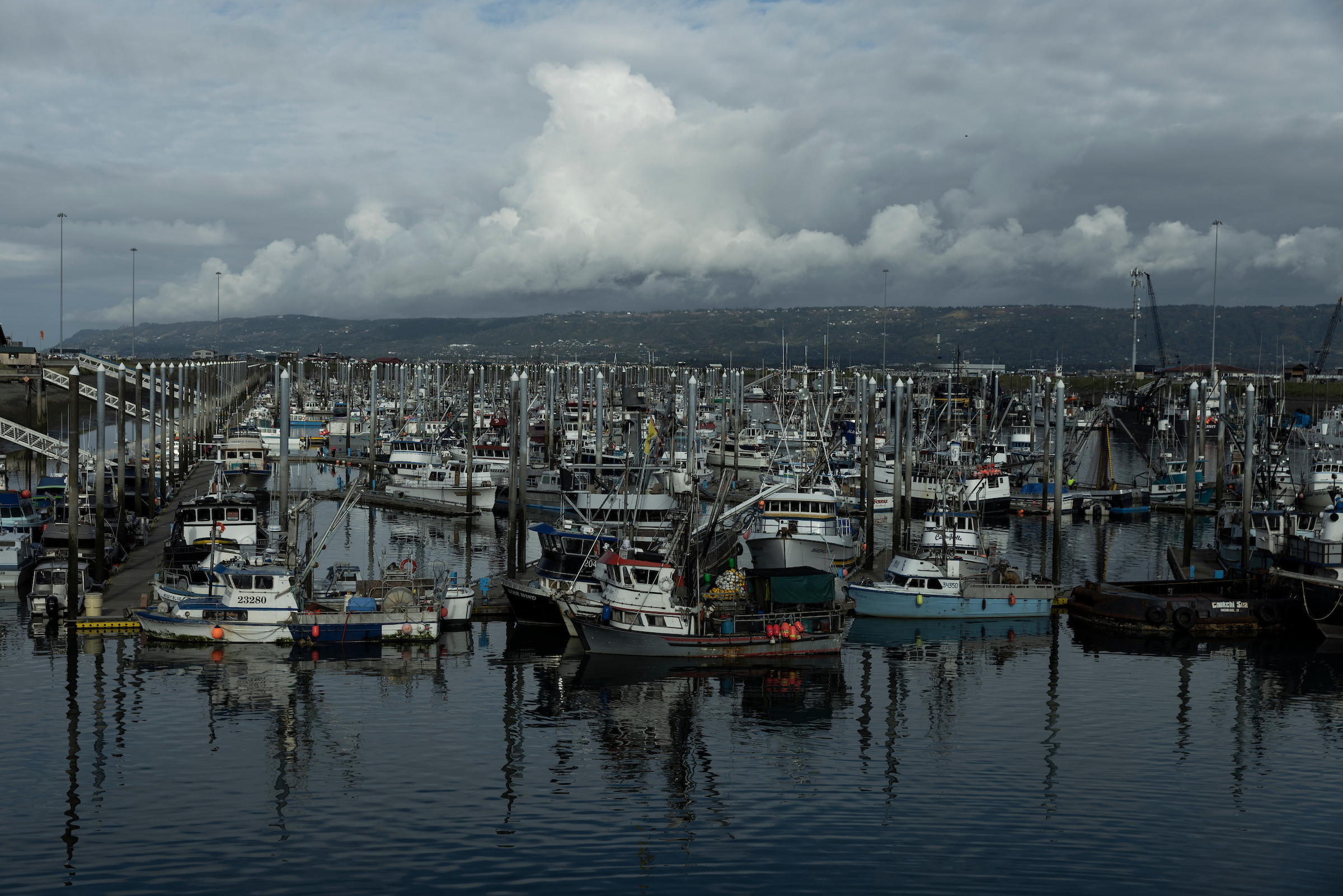
“It’s still going to take decades for us to gain ground,” Peltola said. “If we do everything right and if we do it now.” Image: Nathaniel Wilder/POLITICO
According to Peltola, it could take a generation for chinook and chum salmon to return to levels needed to sustain Native communities and the roughly 25,000 residents along the Yukon and Kuskokwim rivers. And, she says, that’s only if measures are put in place to protect the species and the larger ecosystem, now under enormous pressure from a rapidly warming climate, among other factors. “It’s still going to take decades for us to gain ground,” Peltola said. “If we do everything right and if we do it now.”
But Magnuson-Stevens, in its current form, will face stiff opposition in a narrowly divided Republican-controlled Congress, not only from the trawl industry and its lobbyists, but possibly from the rest of the Alaska delegation.
Trident Seafoods, one of the largest operators in Alaska with nearly two dozen pollock boats and 11 onshore processing plants, was one of the top contributors to both Sen. Lisa Murkowski and Sen. Dan Sullivan’s most recent electoral campaigns and has spent close to $200,000 lobbying on issues related to the legislation in the past two years. Trident is a member of the At-Sea Processors Association, which signed the letter opposing the bill. The company also had close ties to Don Young, who was viewed by industry as one of the only members of Congress with the credibility and stature to get a bill like Magnuson-Stevens through both the House and Senate.
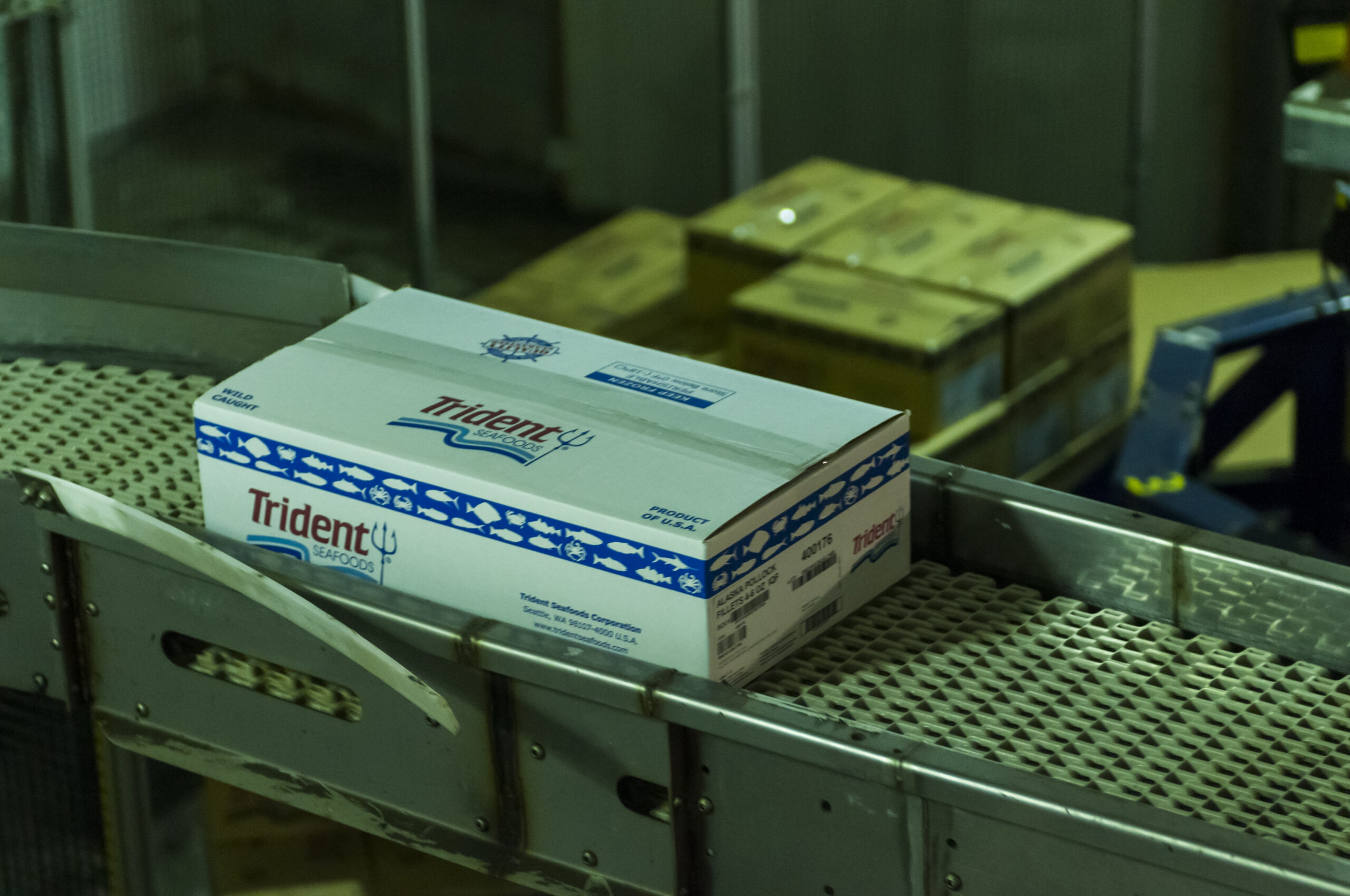
Trident Seafoods was one of the top contributors to both Sen. Murkowski and Sullivan’s most recent electoral campaigns. Image: Christoph Mohr/picture-alliance/dpa/AP
“We are concerned some of the changes proposed to MSA could undermine regional authority and overburden Council resources at a time they are strained,” Trident Seafoods said in a statement. “We believe the broad structure of MSA provides sufficient framing to advance integrating climate impacts, adaptation, and more resilience into management.”
Sullivan is a member of the Commerce subcommittee that oversees fisheries and would be closely involved in any effort to draft a Senate version of the bill. (Sullivan’s office did not respond to requests for comment.) Murkowski, in a recent interview with Alaska Public Media, said any changes to Magnuson-Stevens need to be carefully considered because of its potential impact to Alaska’s economy.
After Young’s death last March, the House delayed work on the legislation until his seat was filled. But the version voted on by the committee in September, after Peltola won the special election to serve the remainder of his term, has not been endorsed by a single Republican. Rep. Bruce Westerman (R-Ark.), who now chairs the House Committee on Natural Resources, described it as “blatantly partisan legislation,” that Young never would have supported. A spokesperson for Rep. Jared Huffman (D-Calif.), who sponsored the legislation, said he plans to reintroduce the bill later this year but would not comment on whether any changes will be made.
Peltola was also a good friend of Young’s and has kept several of his former staffers and policy advisers on her team, including his chief of staff — a nod, she has said, to Young’s legacy of working with members of both parties. Even as she takes on one of the most powerful industries in the state, Peltola has vowed to follow in his footsteps.
“I do want to work with them,” Peltola said, referring to the trawl industry. “I do not want them to see me as a threat.”